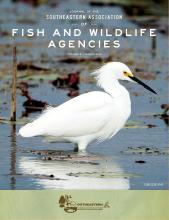Seasonal and Spatial Variation in Diets of Coyotes in Central Georgia
We used scat analysis to evaluate the food habits and potential impacts of coyotes (Canis latrans) on white-tailed deer (Odocoileus virginianus) populations in Georgia's Piedmont physiographic region. From March 2010 - February 2011, we analyzed 146 and 207 coyote scats on Cedar Creek (CC) and B. F. Grant (BFG) Wildlife Management Areas, respectively. Although separated by only 8 km, habitat composition and therefore prey availability was dissimilar between sites. We assumed small mammal density was greater on BFG than CC because early successional habitat was more common on BFG (28% of...
